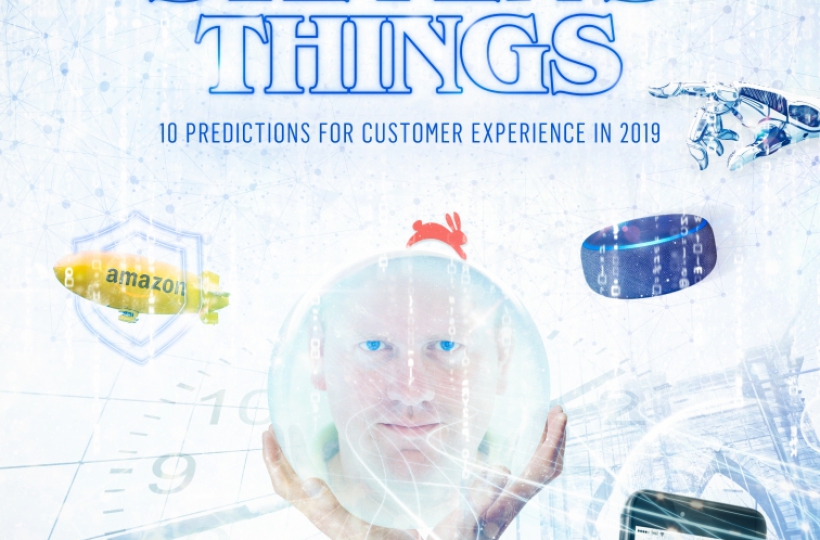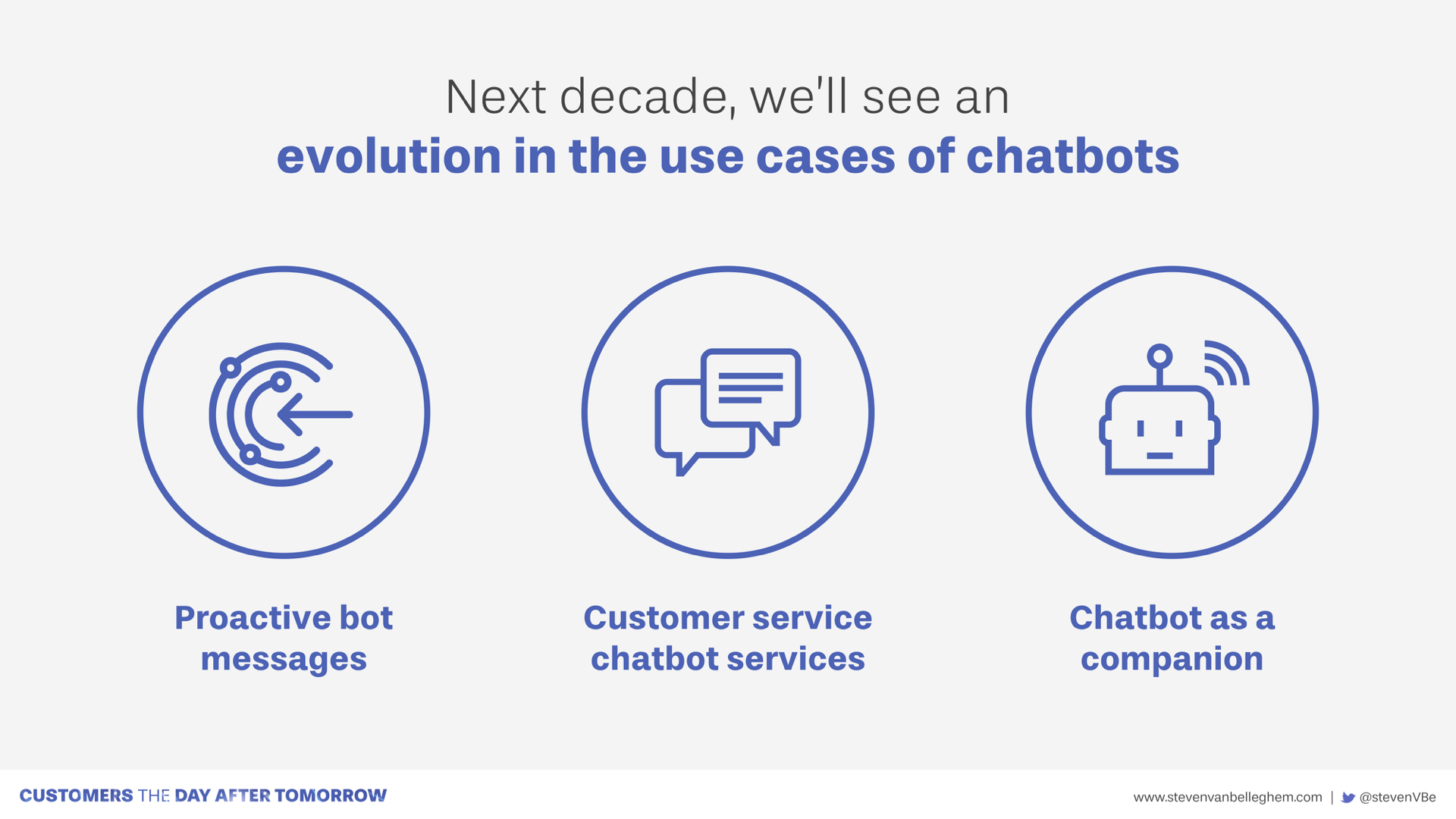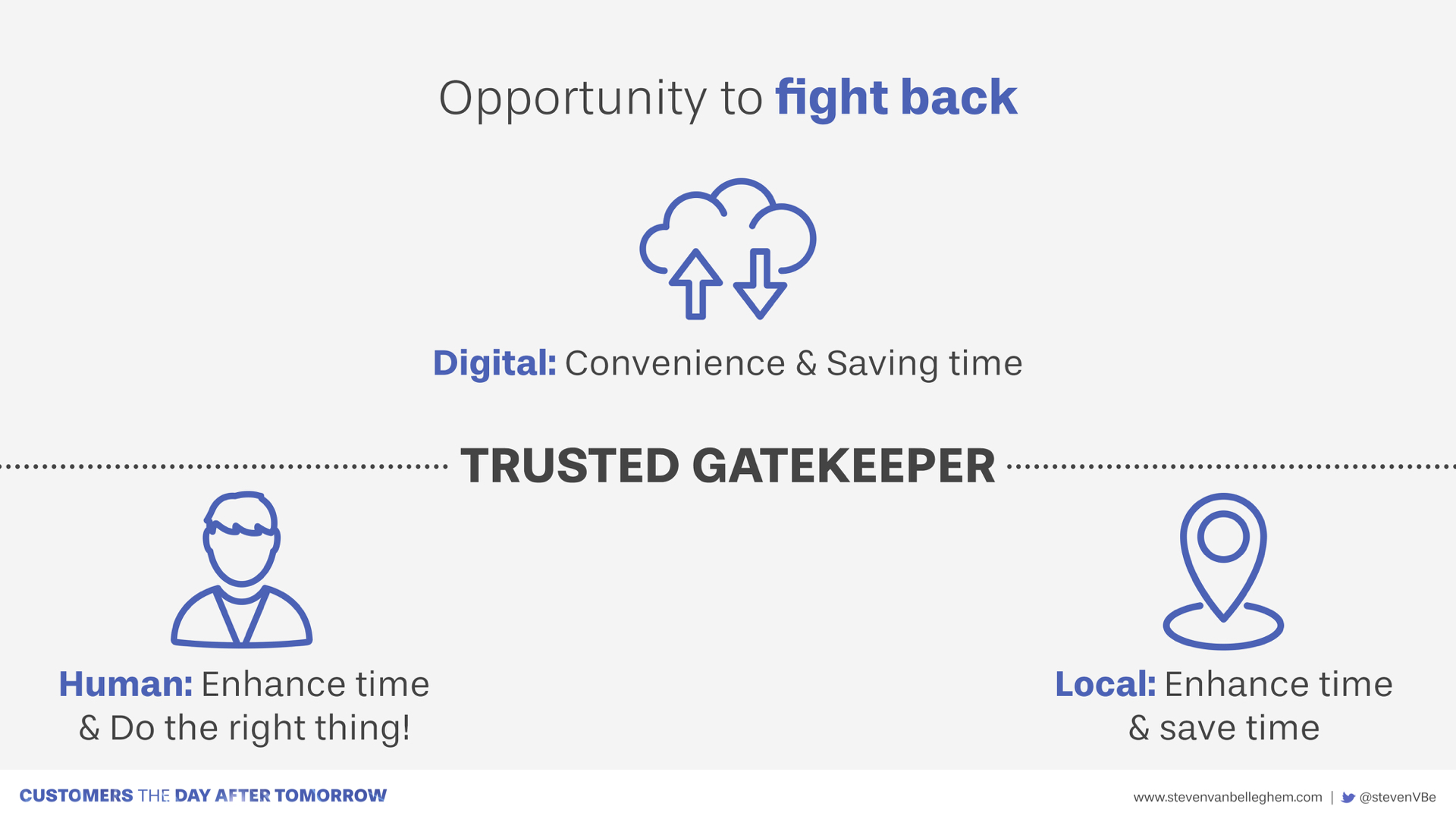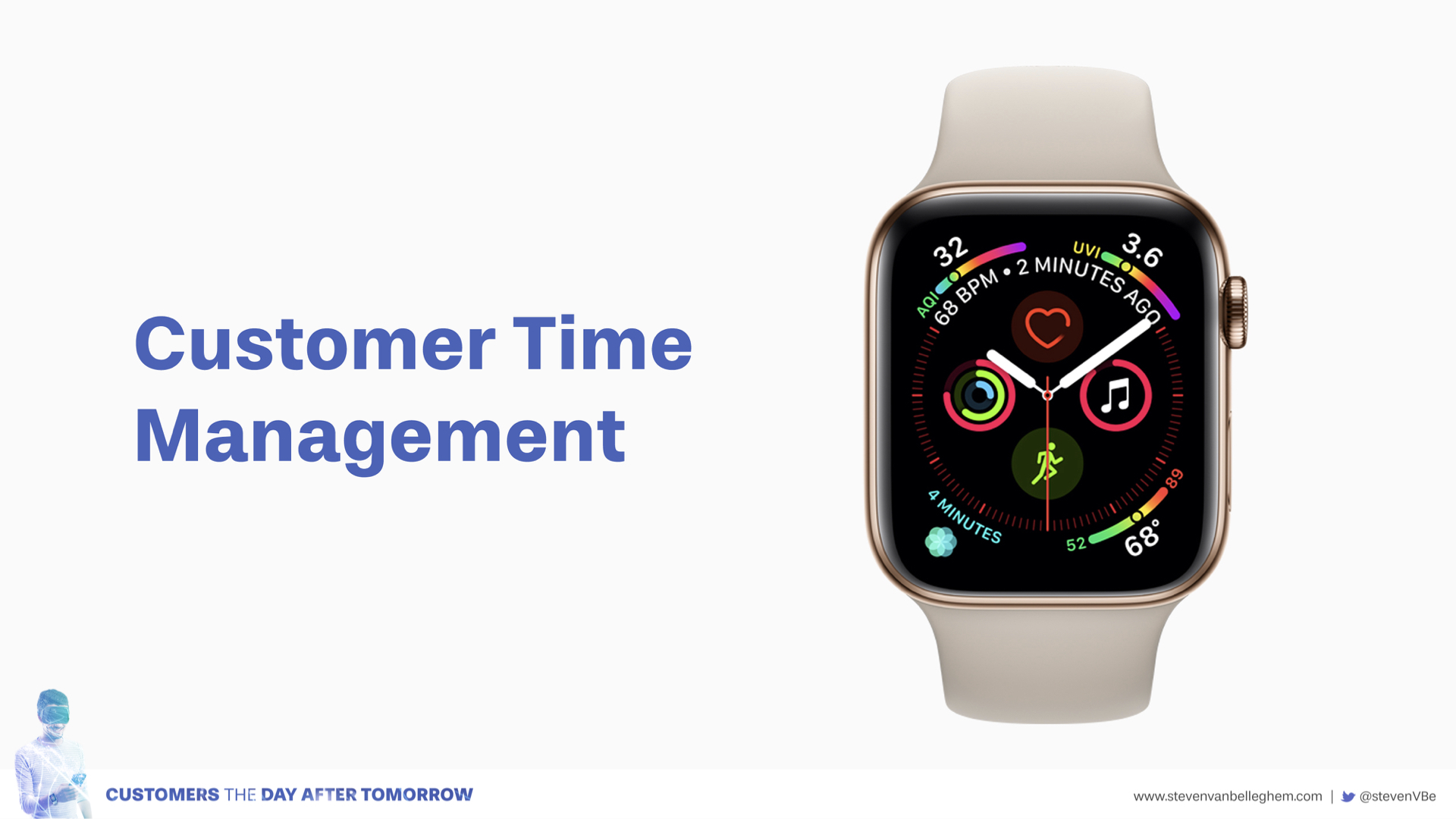10 predictions for customer experience in 2019

#1 Data comes to the front line of sales
Every customer touchpoint is going to become more digital. This trend may have started before 2019, and indeed I have talked about it a lot in 2018, but 2019 is the year when it is really going to take off. The quality of the ‘human touch’ in customer service will fundamentally increase because more data will be available for the front line staff. Human interaction will become tech-augmented in a way that will start to feel normal, and quickly become the expected standard.
This development is important not only because it will allow individual interactions to be much faster, but it will also help staff personalize these interactions more effectively. Companies are going to have more data at their fingertips for each individual customer than ever before – details like: how long have they been a customer, how often do they shop, what’s their birthday. Think how it would feel to be greeted by name every time you make a transaction.
#2 Chatbots grow up
Over the last few years, Chatbots have been the “Dog that didn’t bark” in the world of customer-facing tech solutions. They just haven’t lived up to the expectations so far. But in 2019, I expect that will start changing in a big way, starting with much more focused and intelligent deployment of chatbots.
The best use cases for chatbots are situations where they are used for proactive communication. For example, KLM recently started deploying chatbots to inform passengers where their luggage would come out in the baggage reclaim area. Share information about an upcoming event adds value to a customer, and it is easier than using bots to solve complex customer service issues. Over the course of 2019, I think we’ll become more trusting of proactive communication from chatbots, and this will help companies interact with us effectively, not only after a problem has already arisen.
#3 Predictive commerce
For a decade now, we’ve all been interacting with algorithmic prediction and smart commerce. In fact, Amazon introduced us to this approach almost 20 year ago with its “If you buy this book, you will also like this one” recommendations.
In the next few years, predictive commerce will mature and will automate a large number of day to day purchases. The moment when your printer and your washing machine are connected to your Amazon Prime subscription, they can start to order the ink or detergent they need automatically before you realise you’re running low.
Algorithms will also start to help us to define the best moment to buy a product to optimize the price point. A great example is the Canadian app Hopper – they’re growing up in the business of helping people find flights at a perfect price point, as algorithms help predict when prices are going to drop. So, if a customer is ready to book, the app might say “Hey! Your flight is going to be cheaper very soon. We’ll let you know when!” And this kind of prediction is only the beginning. Hopper might see that a customer is looking at flights to Hawaii. But if flights to Hawaii are looking pricey, it might recommend Miami instead, to help meet that customer’s need at a better price. Hopper’s research showed that the suggested locations have a larger conversation than the original search items, so often, the customer prefers the predicted destination over the original destination. Pretty soon, machines will know us better than we know ourselves.
#4 The power of the Human and the Local
Today, digital is of course crucial if you are going to win customers’ business. Digital is creating a form of convenience that we have never seen before.
On the other hand, the rise of digital means we will also see the rise of the human and the local aspect. Smaller, more locally-centered companies will create a competitive advantage in a way tech companies won’t. These gigantic tech companies aren’t really able to adopt the Human and Local traits that smaller, more community-focused organizations can. They simply don’t know the local communities they operate in as well. A recent trip I took to the Williamsburg neighborhood of Brooklyn really drove this home to me. It’s obvious from just a quick look around that this is a neighborhood that really cares about craftsmanship and quality, and that’s a place where the human dimension can really shine through in creating and delivering a service, no matter where you are.
#5 Offline locations become digital platforms that just happen to be offline
The distinction between online and offline is quickly being erased. A lot of offline experiences that used to rely on pen, paper and memory are being digitized and automated to make the process more seamless and efficient for everyone, and this is set to expand in 2019.
While that is an example of the offline becoming more online-like, Amazon’s register-free stores take the online experience into the offline world. And the cashierless experience is unlikely to remain exclusive to Amazon for long. Get ready to see a lot more of that; hotel check-in is becoming automated; and in China, Alibaba’s Hema stores are going crazy. These are stores that, paradoxically, don’t have a lot of customers in them. They’re mostly filled with staff fulfilling orders, which makes them a kind of hybrid store & fulfillment center in one.
We will see an important evolution: most of the current digital offline tools are still gimmicks. They are cool, but they don’t really change the essence of the model. The new offline digital platforms will change the core of the customer relationship.
#6 Voice becomes an important brand/product filter
Voice is becoming the new everywhere-on filter for brands all around the world. Amazon’s Echo and Alexa assistant are now the new filter for how customers get exposed to brands, and make decisions about them. It cuts out the need for customers to go through dozens of pages of products to find the brands and products they want. This is an undeniable improvement for the customer experience, and it solves the issue of too much choice.
But it has big implications for brands trying to offer their products to these customers. According to Business Insider, 54% of American households already have an Amazon Echo device. This means that, for more than half of all American customers, once voice enters into the customer search process, Amazon will act as a huge brand filter determining what gets offered to them. A lot of brands will now be competing to get on the front end of this customer exposure. Amazon is installing the biggest product filter in the world. In the same way that Facebook became the biggest information filter in the world, Amazon is doing this for products.
#7 The Rise of B2M
Obviously, we’ve all heard of B2C and B2B, but now, we’re about to get into B2M. What do I mean by this? Well, over the last decade or so, we’ve all got used to algorithms making recommendations for us. But pretty soon, probably starting in 2019, they’re actually going to start taking this to the next level and actually buying things for us.
In 2019 we will see the rise of algorithm based buying. This will necessitate companies starting to figure out how to market not just to you the customer, but to the algorithms that “represent” you in the digital world. So, for instance, you can buy a “smart washing machine” that’s linked to your Amazon account. This washing machine would monitor how much detergent you’ve used, and make sure it orders more when you’re too low. And that’s where B2M marketing will come in. Which brand will it buy? How much? Once it knows your preferences, it will sort through the “digital coupons” and B2M marketing to figure it out. Marketing to machines will become a whole new discipline in the marketing world.
#8 More focus on managing the time of your customer
Over the last decade, we’ve all become more aware of, and concerned about, how much time we spend doing various things in our lives. This means we’ve also become more conscious of the importance of saving time, and spending what little time we do have well. Companies are now getting in on that too, and are going to start putting their expertise at time management to the benefit of the customer in a really direct and tangible way. Time is one of the scarcest resources in your customers lives, so being focussed on customer time management is an important part of customer experience management. There are two possibilities that you can do with your customers time: you can save them time or you can enahance their time.
Some of this is going to come in the form of just enhancing the quality of experiences that people already have – spending time well. Other parts of it are going to focus on taking some experiences that customers may not enjoy or not need, and figuring out how to reduce or eliminate them – savingtime. Understanding customer context and customer experience will be key to this. That way, if the company knows what you need and the time you need it, so there’s no delay in the offering, and no time wasted offering you the wrong thing at the wrong price. Time is a valuable thing, and companies are going to start help you spend it better.
#9 The rise of more complex Ecosystems
Products that used to exist as standalone are now becoming designed and marketed as parts of a broader ecosystem. It’s not just the one product, but the whole suite of services and components you will need for it.
Amazon is perhaps the biggest example. When they embed Alexa in smart devices, they start to understand the full customer context, and begin to fulfill more needs than just final end-point delivery, but always-on servicing. Amazon’s Alexa is not a product or a service. Alexa is a platform.
And other companies are following suit. Not to be left behind, Google is partnering with WalMart to offer the same kind of ecosystem and transform the customer experience into something customers inhabit, rather than just jump in and out of.
Next up to watch in this space is undoubtedly going to be the automotive market. As self-driving cars shift from pipe dream to reality, the car is going to become the next platform where companies will compete for attention. More and more industries will transform in ecosystems: where competitors become partner, where partners become competitors.
#10 The rise of trusted gatekeepers
The year 2018 saw significant degradation of trust in the big tech firms across the board. Probably none as prominent and important as Facebook. The Cambridge Analytica scandal and the revelations of other hacks have really dented people’s faith in the Black Box approach that the tech firms have taken so far.
Transparency is going to start to be an important selling point to win customers over in the future. The firms that customers trust with their data are going to have a huge differentiator when it come to customer experience. Big tech companies will start to focus on becomes trusted gatekeepers, not just focusing on world domination. I wouldn’t be surprised if, at a certain moment, we will get demand for algorithm transparancy. Just like public companies are being asked to be transparent in their financials, soon the world will ask the same for transparency in AI.
Enjoy 2019!
Clearly, 2019 is going to be a really big year in tech and customer experience. Individual products and processes are coming together and forming new full-service platforms and ecosystems. Technologies that were nascent and “out-there” as recently as two years ago are going to be taking over whole sectors. Customer experience is going digital and going human. We’re witnessing some really impressive changes here, and they’re going to make our lives and and our retail experiences better and smoother than ever before. Buckle up!


